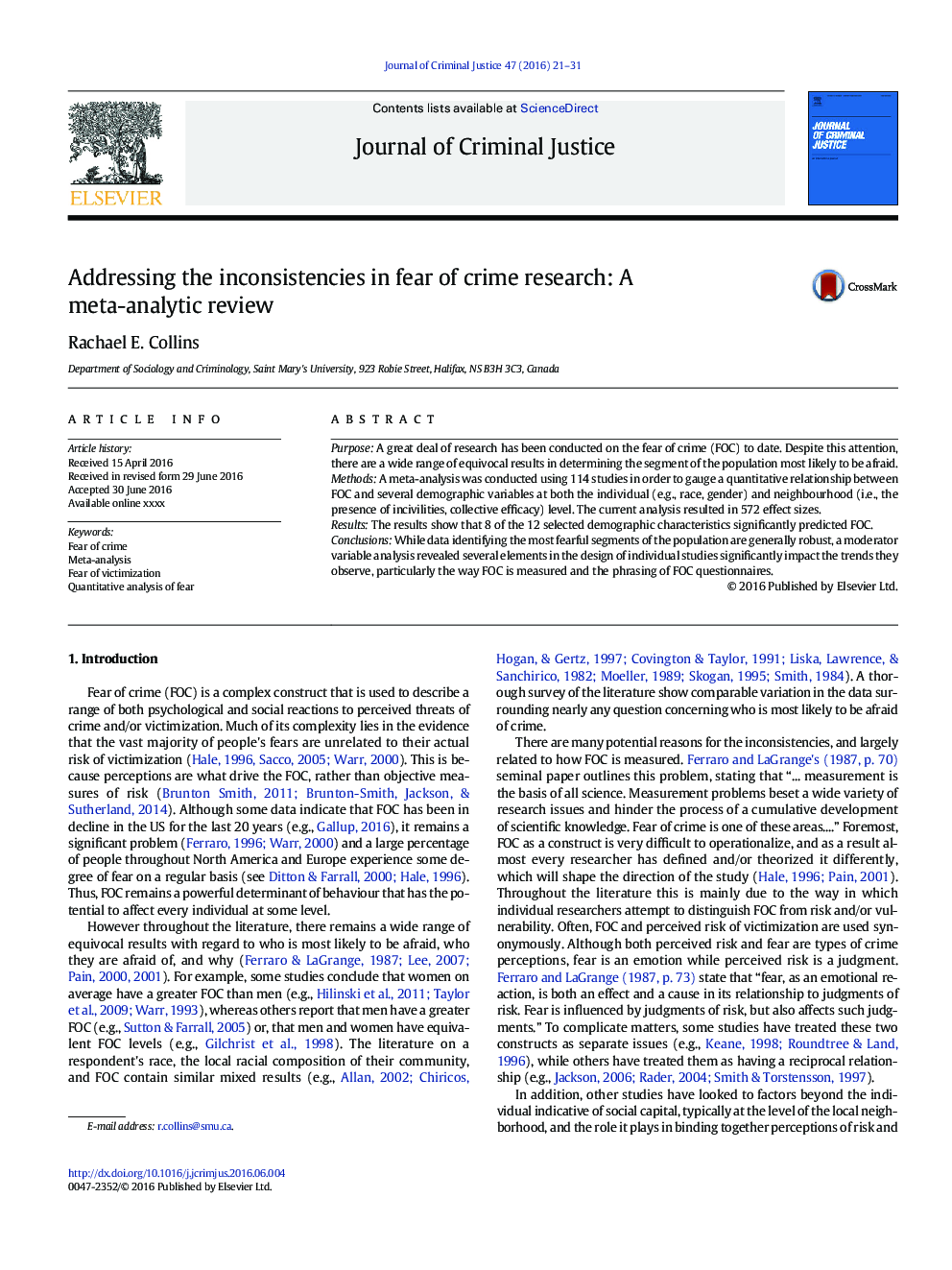| کد مقاله | کد نشریه | سال انتشار | مقاله انگلیسی | نسخه تمام متن |
|---|---|---|---|---|
| 882605 | 1471586 | 2016 | 11 صفحه PDF | دانلود رایگان |
• Many speculate that the way fear of crime (FOC) is measured affects results.
• Here, meta-analysis provides the first quantitative support for this hypothesis.
• Changes in question wording or possible responses alters who seems most afraid.
• Studies in US report less differentiation between those most and least afraid.
• Binary questions lead to false positives about whom are most fearful of crime.
PurposeA great deal of research has been conducted on the fear of crime (FOC) to date. Despite this attention, there are a wide range of equivocal results in determining the segment of the population most likely to be afraid.MethodsA meta-analysis was conducted using 114 studies in order to gauge a quantitative relationship between FOC and several demographic variables at both the individual (e.g., race, gender) and neighbourhood (i.e., the presence of incivilities, collective efficacy) level. The current analysis resulted in 572 effect sizes.ResultsThe results show that 8 of the 12 selected demographic characteristics significantly predicted FOC.ConclusionsWhile data identifying the most fearful segments of the population are generally robust, a moderator variable analysis revealed several elements in the design of individual studies significantly impact the trends they observe, particularly the way FOC is measured and the phrasing of FOC questionnaires.
Journal: Journal of Criminal Justice - Volume 47, December 2016, Pages 21–31
